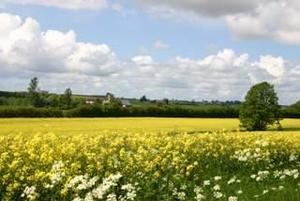 [endure 01 August 2013 by Janne Hansen] — With effect from 1 July 2013 a new pesticide strategy has been implemented in Denmark, writes Janne Hansen. The aim is to reduce the use of pesticides, particularly those that have a high impact on the environment and human health. The most important change is the amended tax on pesticides. The tax will increase the cost of pesticides having a high potential impact on health and the environment. The intention is to motivate farmers and other pesticide users to reduce their use and the load of potentially harmful pesticides. The pesticide strategy will continue where Denmark’s Green Growth programme left off (read about the Green Growth programme in our original Denmark Country Profile) and many of the activities that were originally planned as part of Green Growth continue. The most important change ensuing from the new pesticide strategy is that the Treatment Frequency Index will be replaced by a Pesticide Load Indicator. This means that pesticides will be taxed according to their load indicator instead of a value added tax regardless of load. Continue reading …
[endure 01 August 2013 by Janne Hansen] — With effect from 1 July 2013 a new pesticide strategy has been implemented in Denmark, writes Janne Hansen. The aim is to reduce the use of pesticides, particularly those that have a high impact on the environment and human health. The most important change is the amended tax on pesticides. The tax will increase the cost of pesticides having a high potential impact on health and the environment. The intention is to motivate farmers and other pesticide users to reduce their use and the load of potentially harmful pesticides. The pesticide strategy will continue where Denmark’s Green Growth programme left off (read about the Green Growth programme in our original Denmark Country Profile) and many of the activities that were originally planned as part of Green Growth continue. The most important change ensuing from the new pesticide strategy is that the Treatment Frequency Index will be replaced by a Pesticide Load Indicator. This means that pesticides will be taxed according to their load indicator instead of a value added tax regardless of load. Continue reading …| Product name and active ingredient | | Old price including old value added tax | | Old price excluding tax | | Expected new price with new tax | |
| Ally ST (metsulfuron-methyl, 200g/kg) | 3.90 DKK/g | 2.92 DKK/g | 3.01 DKK/g |
| Boxer (prosulfocarb, 800g/L) | 85.00 DKK/L | 63.75 DKK/L | 173.75 DKK/L |
| Rubric (epoxiconazole, 125g/L) | 353.00 DKK/L | 264.75 DKK/L | 484.75 DKK/L |
| Cyperb 100 (cypermethrin, 100g/L) | 170.00 DKK/L | 110.50 DKK/L | 1,687.50 DKK/L |
| Cycocel 750 (chlormequat-chloride, 750g/L) | 23.00 DKK/L | 17.25 DKK/L | 97.25 DKK/L |